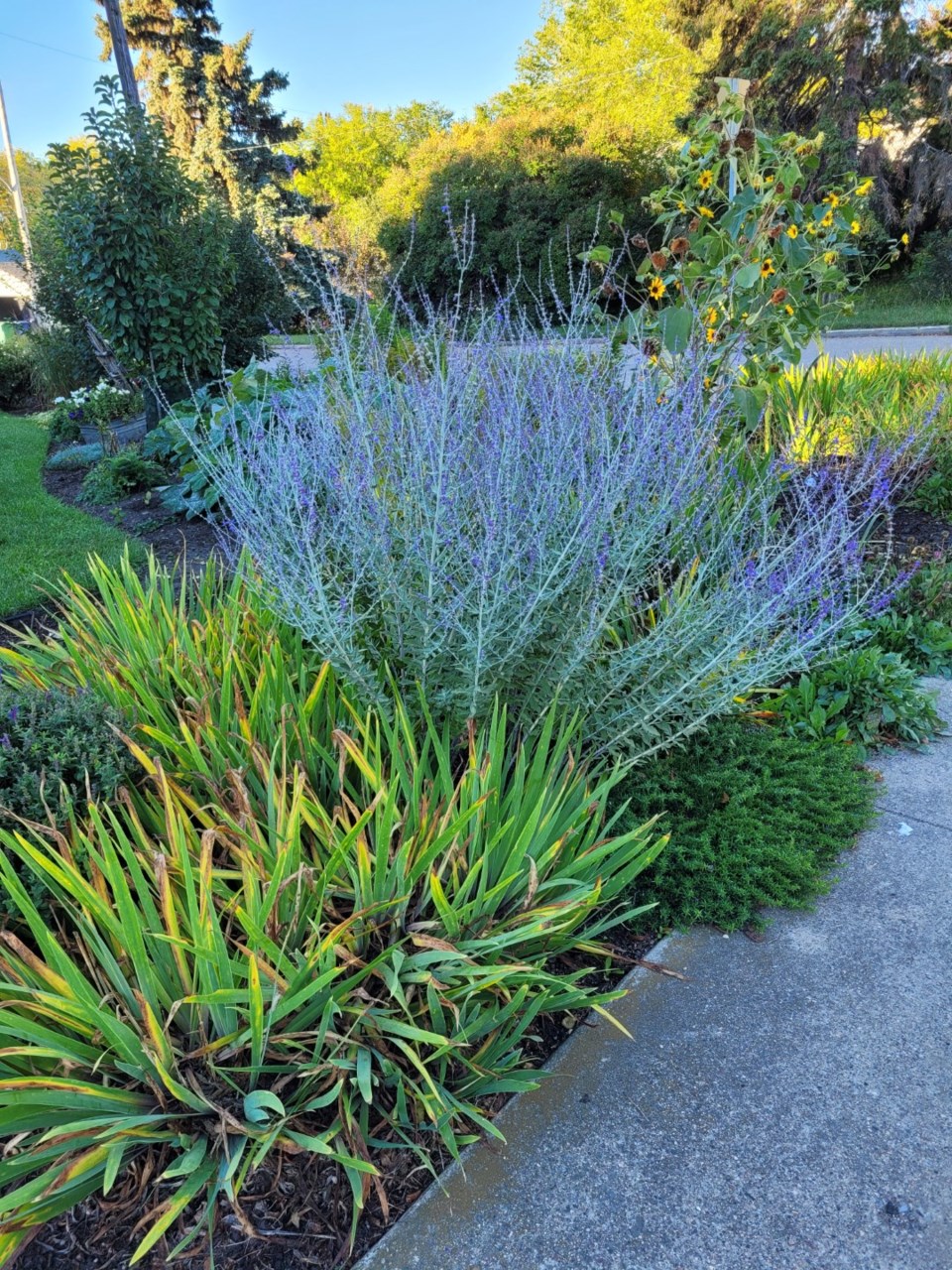Neither Russian nor a sage, this plant is native to Afghanistan and Pakistan in Central Asia and Tibet, at elevations of up to 2,400 metres. The Russian botanist named the genus, Grigory Silych Karelin, who collected plants through Siberian and Central Asia in the 1800s. He called it after B. A. Pderovski, the Turkestani governor of the Russian province of Orenburg.
The common name, Russian sage, comes from the sage-like fragrance released when the leaves are crushed and the erroneous belief that it originated in Russia.
A member of the mint family, it is semi-woody with square stems and opposite leaves. The stems are silver grey and the leaves are grey-green. Tiny, purple-blue tubular flowers, arranged in whorls along the stems, are produced from mid to late summer into fall. Reliably hardy to zone 4 (Saskatchewan is mostly in zone 3), it superficially resembles lavender and can be used as a “substitute” in colder zones. With a height and spread of about three feet and a long blooming period, it is ideal for a xeriscape landscape but may require some winter protection.
It has been in cultivation since the mid-1800s when first introduced. Typically 90 to 120 cm (3-4 ft) tall and with an equal width, place it in the middle or back of a perennial border or a more informal cottage garden or with ornamental grasses. Plant it in a protected location (by a fence or building) in early spring in full sun on well-drained soil, spacing the plants about 45 cm (18 in.) apart. Mulch the soil surface with about 10 cm (4 in.) of grass clippings or post peelings. There is generally no need for supplemental fertilizer. Water when planting until established. Once established, they are fairly drought-tolerant but may require some additional water during extended periods of drought.
Plants should be cut back to about 15 cm (6 in.) in late fall or early spring. It can be propagated by seed but germination can take up to 4 months. Taking 7.5 to 10 cm (3-4 in.) softwood cuttings in late spring is quicker and easier.
Gardeners who live “in the country” will be pleased to note that it is generally avoided by deer and rabbits. It has no serious pest or disease problems and is very attractive to bees, butterflies and hummingbirds.
It was named the Perennial Plant of the Year in 1995 by the Perennial Plant Association. Among the varieties are:
‘Blue Haze’ with paler blue flowers and less finely cut foliage.
‘Blue Spire’, an upright form to 90 cm (3 feet) with deeply lobed foliage and deep purple flowers on larger panicles.
‘Filigran’ with finer, more dissected foliage with an almost airy, lacy appearance. Bright blue flowers are borne throughout the summer on 60- to 90-cm (2-3-foot) spikes.
‘Little Spire’ is dwarf, more compact and only 60 cm (2 ft) in height.
‘Longin’ has a more formal, upright growth habit and stiffer stems and slightly larger leaves.
Sara Williams is the author of many books including Gardening Naturally with Hugh Skinner, Creating the Prairie Xeriscape, and with Bob Bors, Growing Fruit in Northern Gardens.
This column is provided courtesy of the Saskatchewan Perennial Society (SPS; [email protected]). Check our website (www.saskperennial.ca) or Facebook page (www.facebook.com/saskperennial) for a list of upcoming gardening events.




